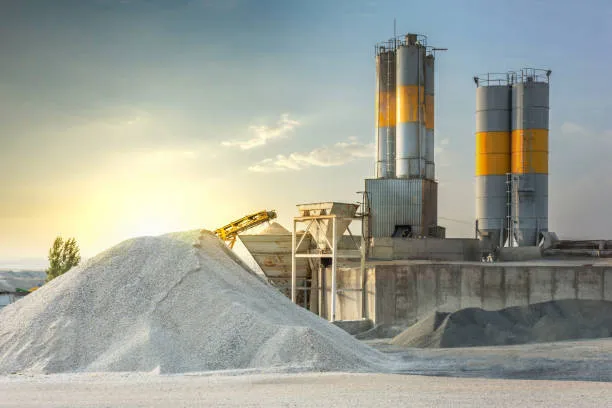
The “Green Cement – A Global Market Overview” report has been added to ResearchAndMarkets.com’s offerings. Global demand for Green Cement is projected to reach US$38.5 billion in 2024, up from US$35 billion in 2023, and is forecast to grow at a compound annual growth rate (CAGR) of 10.1% from 2024 to 2030, ultimately reaching US$68.6 billion by 2030.
This comprehensive report analyzes the Green Cement market based on product type and application. It provides insights into major players operating in the market and highlights the latest corporate and industrial developments, offering a clear picture of how the market is progressing and where it’s headed.
What is Green Cement? Green Cement is a more sustainable alternative to traditional Portland cement. Unlike conventional cement, which is energy-intensive and emits large amounts of carbon dioxide during production, green cement uses innovative technologies and materials to reduce carbon emissions and energy consumption. A key aspect of green cement is the incorporation of industrial by-products such as fly ash, slag, or limestone as partial substitutes for clinker, the main component of traditional cement. This helps lower the carbon footprint without compromising the structural integrity or performance standards required for construction projects.
Key Market Drivers Several factors are driving the growth of the Green Cement market. A major catalyst is the increasing global demand for sustainable construction materials due to rising environmental concerns. Governments worldwide are imposing stricter regulations to curb carbon emissions, encouraging manufacturers to adopt eco-friendly practices and technologies. The expansion of the construction industry, particularly in emerging markets, is also fueling demand for more sustainable building materials. As awareness of climate change grows, there is an increasing preference for low-carbon alternatives in construction projects.
Technological advancements in cement production are playing a vital role in enhancing the efficiency and performance of green cement. These innovations not only contribute to reducing emissions but also make the material more cost-effective, which is appealing to developers and builders. By utilizing industrial by-products, green cement also helps reduce waste, making it an environmentally friendly and cost-efficient choice.
Green Cement Market by Product Type Fly Ash-based Green Cement dominates the market, with an estimated share of 42.3% in 2024. This is due to its cost-effectiveness, environmental benefits, and availability. Fly ash is a by-product of coal combustion in power plants and is repurposed in cement production to reduce the need for traditional clinker, thus lowering carbon emissions. Fly ash-based cement also offers enhanced durability, workability, and strength compared to conventional cement, making it an attractive option for a wide range of construction applications. The segment is expected to grow at the fastest CAGR of 9.4% from 2024 to 2030, driven by the increasing availability of fly ash, particularly in regions with large coal industries, and growing market demand for eco-friendly materials.
Regional Market Insights North America is the largest market for Green Cement, accounting for 40.4% of the global market share in 2024. This is primarily due to strong regulatory support, high environmental awareness, and a commitment to reducing carbon emissions in the construction sector. The U.S. and Canada have implemented strict regulations aimed at reducing carbon emissions, and both countries offer incentives for adopting sustainable building practices, including certifications like LEED (Leadership in Energy and Environmental Design). These factors create strong demand for eco-friendly construction materials, such as Green Cement.
The Asia-Pacific region is expected to be the fastest-growing market for Green Cement, with a projected CAGR of 11.6% from 2024 to 2030. This growth is driven by rapid urbanization, infrastructure development, and a growing awareness of environmental issues across countries like China, India, and Southeast Asian nations. As these regions experience significant construction booms, there is mounting pressure to adopt sustainable building practices to mitigate the environmental impact of the construction industry.
Green Cement Market by Application The commercial sector is currently the largest segment of the Green Cement market, holding a 47.3% share in 2024. This is largely due to an increased focus on sustainability, corporate social responsibility, and the need to meet regulations concerning energy efficiency and carbon emissions. Businesses and developers are increasingly recognizing the value of eco-friendly construction materials to enhance their brand image and appeal to environmentally conscious consumers. Green Cement aligns with the growing demand for sustainable commercial buildings, including office spaces, retail outlets, and warehouses.
Meanwhile, the residential sector is expected to register the fastest growth during the forecast period, with a CAGR of 8.7% from 2024 to 2030. Rising consumer awareness about sustainability and the desire for eco-friendly living spaces are driving this growth. Homeowners and builders are increasingly opting for green materials and energy-efficient construction practices to reduce their environmental impact and create healthier living environments.
Market Players Several major players are contributing to the growth of the Green Cement market. These include:
- ACC Limited
- Anhui Conch Cement Company Ltd.
- Calera Corporation
- CEMEX S.A.B. de C.V.
- China National Building Material (CNBM)
- Ecocem Ireland Ltd.
- HeidelbergCement AG
- Kiran Global Chems Ltd.
- LafargeHolcim
- Taiheiyo Cement Corporation
- UltraTech Cement Ltd.
- Votorantim Cimentos




